Introducción
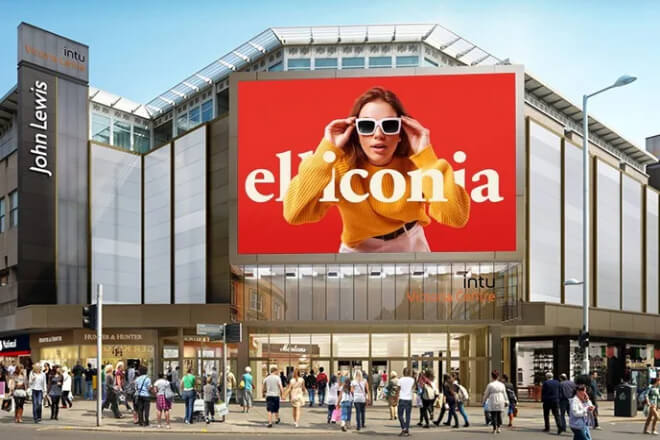
En Centros comerciales, pantallas de visualización LED are important tools for attracting customers and conveying information.
However, many businesses often fall into some common “minefields” when installing LED screens, which not only wastes money, but also affects brand image and user experience.
Today, let us uncover these hidden traps and see how to avoid making mistakes that should not be made when installing LED screens in shopping malls.
Tabla de contenido
Minefield 1: Wrong location selection affects the flow of people and the perception
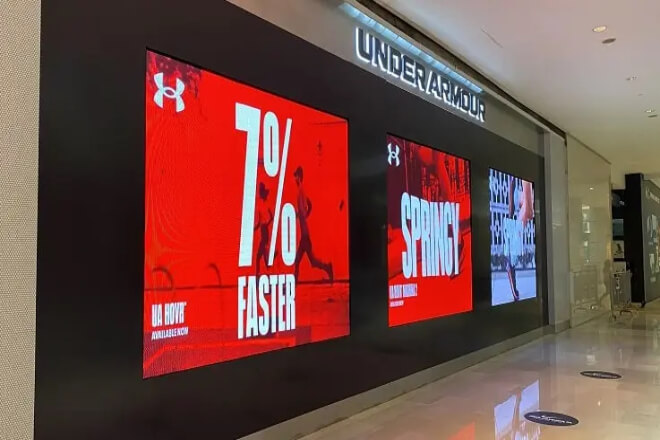
Installing LED screens in Centros comerciales, if the location is not well selected, is simply a waste of money.
You must know that if the screen is placed in a corner, behind a pillar, or in a blind spot in the sight of the passage, people walking can’t see it at all, and the content of the screen is like playing to the air, and the effect is naturally very poor.
If you want to play the role of LED screens, you must first figure out where the flow of people is and where people are most likely to stay.
For example, at the elevator entrance, next to the escalator, or at the intersection of the shopping mall, there are many people, and they stay for a long time. If you install the screen here, the exposure rate will naturally be high.
It is best to combine some data, such as the heat map of the flow of people, to see which point is the busiest, not just by feeling.
In addition, if the LED screen is installed too high or too low, it is easy for people to see it.
Dynamic images and detailed content cannot be seen clearly if they are too far away from the audience, and they can be dizzying if they are too close. Find a suitable sight height so that people can see it comfortably.
Another point to note is that you should not install the screen to block the road or make it inconvenient for people to walk, which will affect the shopping experience and make it more costly.
Some shopping malls will install LED screens on both sides of the escalator, so that people can see the content while waiting for the escalator, and remember the advertisement more firmly.
There are also shopping malls that integrate LED screens with the overall decoration style, which is not abrupt and more comfortable to look at.
In summary, choosing a good location is half the success. Don’t install it blindly. Look at the places with a lot of people and walk accurately. Only then can the LED screen really “shine and heat” and attract more attention.
Minefield 2: Inappropriate brightness, glare, or unclear
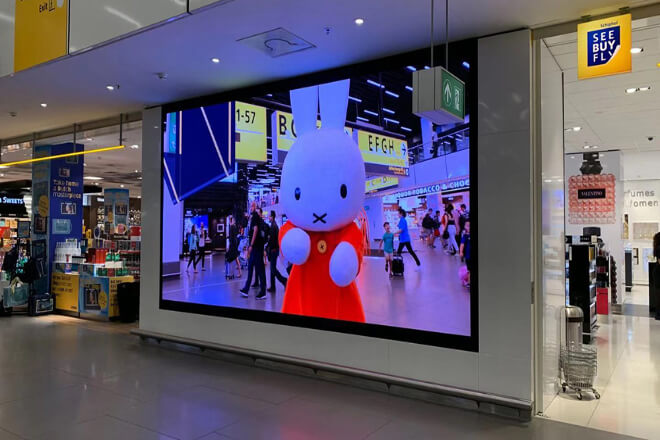
Si el brillo of the LED screen is not selected well, the effect will be discounted, and sometimes even disgusting.
Especially in indoor environments such as shopping malls, if the screen brightness is too high, especially when viewed from close up, it is easy to be dazzling, uncomfortable.
And even unwilling to watch for a few more seconds; on the contrary, if the brightness is too low, the content will not be clear, and the advertisement will be wasted.
A mistake that many people often make is to follow the brightness standard of outdoor LED screens.
In order to resist strong sunlight, the brightness of outdoor screens is usually very high.
However, when placed indoors, the light is not so strong, and such brightness appears too dazzling, which can easily cause visual fatigue.
Customers will get tired of their eyes after watching for a long time, and even avoid the screen.
Therefore, the brightness of indoor LED screens should be moderate, especially in close viewing areas.
Such as shopping mall passages and traffic stop areas, where the brightness should be controlled to avoid being too strong.
An ideal approach is to install a system with an automatic brightness adjustment function.
Which can automatically adjust the screen brightness according to the light changes in different time periods and different areas in the shopping mall to ensure that the picture is both clear and comfortable.
For example, when there is sufficient natural light during the day, the screen brightness is slightly increased, and it is automatically reduced at night or when the light is dim to avoid glare.
This not only improves the viewing experience but also extends the service life of the LED screen.
In short, brightness adjustment is not a fixed rule of “the brighter the better”. The key is to adjust the brightness just right.
If customers feel comfortable, they will naturally be more willing to stay, and the advertising effect will be better.
Minefield 3: Too much "hard advertising" in the content, users are bored
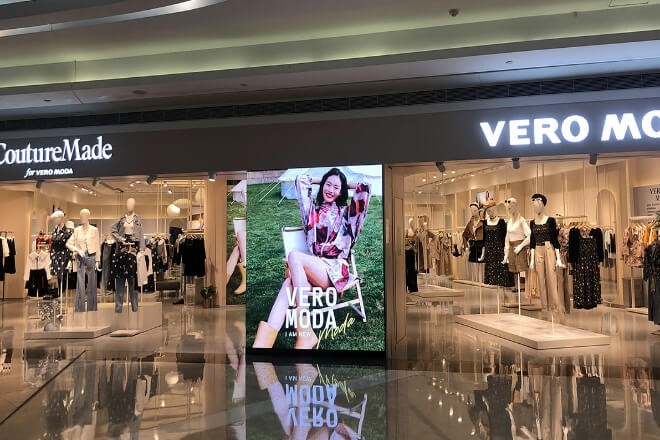
In shopping malls, if the LED screen is always “hard advertising”, customers will inevitably feel disgusted after seeing too much, and the effect will be counterproductive. After all, people go shopping to relax, not to be bombarded by advertisements.
For example, Times Square in New York, USA, is well aware of the importance of content rhythm.
Although there are a lot of advertisements there, the content rhythm on the screen is well-controlled.
It is not a single hard advertising cycle, but interspersed with brand stories, public service advertisements, art short films, etc., to attract the attention of different groups of people, making the advertisements “substantial” without being harsh.
Another example is the LED screen of Westfield Shopping Center in London, UK, which creates a comfortable visual atmosphere through diversified content.
In addition to brand advertisements, they will also broadcast local cultural event previews, shopping guides, and environmental protection public welfare short films, with rich content and moderate rhythm.
Even hard ads are presented in a humorous and creative way, such as using animation and interactive elements to avoid being rigid and make the audience feel relaxed and interested.
In addition, the LED screen in The Grove shopping area in Los Angeles, USA, also pays special attention to the integration of practical information.
Updating mall activities, and guide content in real time to help customers shop more conveniently.
This diversity of content avoids the visual fatigue caused by a single advertisement, making the LED screen a combination of information and entertainment, and improving the overall customer experience.
Therefore, the content of the mall LED screen should not just be about constantly promoting products, but should pay attention to rhythm and level.
The combination of soft and hard, creativity is king, can not only convey brand information, but also improve user favorability, which is the real “way to profit”.
Minefield 4: Ignoring maintenance conditions and cleaning environment
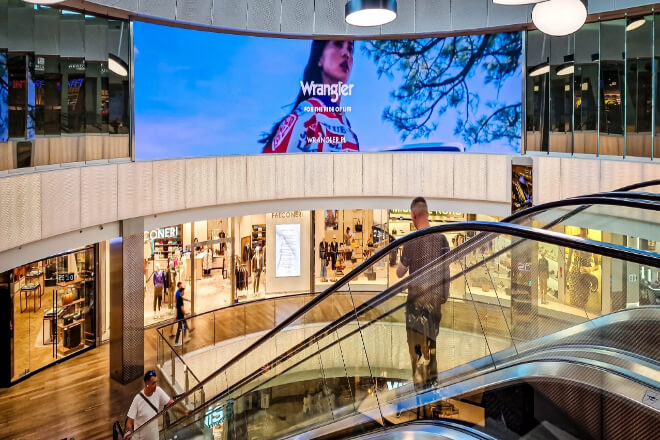
Although the mall looks clean and tidy, dust and debris are inevitable, especially in places with large traffic. LED screens easily accumulate dust and can even be bumped and scratched.
If you don’t pay attention to cleaning and maintenance, the screen image will become blurred and the color will be distorted, affecting the overall look and feel.
Over time, problems such as broken lamp beads and display abnormalities may occur.
During design and installation, the screen structure should be easy to maintain and disassemble, so that the staff can clean and repair it regularly.
For example, with modular design, the screen unit can be quickly disassembled and replaced, avoiding the trouble and cost caused by large-scale disassembly and assembly.
At the same time, the installation location is also critical. Avoid placing the LED screen near the air outlet of the air conditioner.
Dripping or humid areas, which can easily cause moisture inside the screen and affect the life of electronic components.
Many large shopping malls and shopping centers attach great importance to this.
For example, the South Coast Plaza shopping mall in the United States regularly arranges professional teams to clean and test the LED screen and selects dust-proof and moisture-proof screens to ensure the stable operation and visual effects of the screen.
In short, maintenance and cleaning cannot be ignored. Only by maintaining the “appearance” and normal function of the screen can the LED screen continue to play its role and avoid losing the big picture for the small.
Minefield 5: Low resolution affects the close-range viewing experience
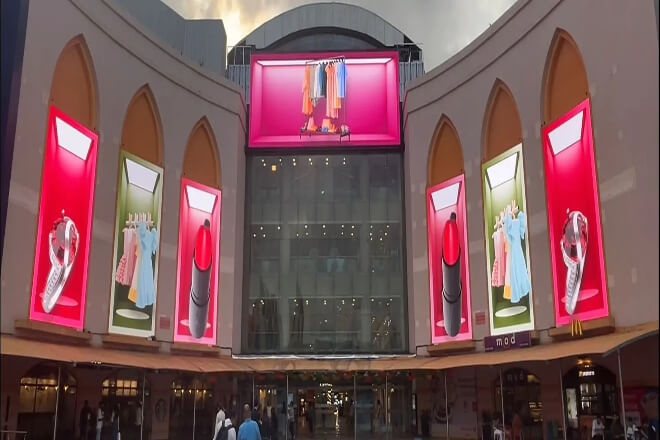
When many shopping malls install LED screens, they only want a large screen, thinking that the larger the screen, the more eye-catching it is, but they ignore the importance of resolution and dot pitch.
In fact, a larger screen does not mean a clearer picture, especially in an environment where most viewers are close to each other, such as a shopping mall.
If the dot pitch is too large, the details of the picture will be blurred, and even obvious “graininess” can be seen, affecting the overall viewing experience.
The viewing distance of many LED screens in shopping malls is usually short, such as in corridors and entrances.
The ideal dot pitch is generally P2.5 or below, so that it can be clear and delicate even at close range.
Many large shopping malls in Europe and the United States attach great importance to this.
For example, Westfield Mall in San Francisco, USA, gives priority to P1.9 or P2 high-resolution screens in close viewing areas to ensure rich details and full colors, bringing customers a comfortable visual enjoyment.
Moreover, many people are greedy for cheapness and choose screens with large dot pitch and low resolution.
Although the cost is low, the viewing experience is poor, which does not have the effect of publicity, and even makes people feel cheap and damages the brand image.
Therefore, when purchasing LED screens, it is necessary to match the appropriate dot pitch and resolución according to the actual distancia de visualización and scene requirements.
Large screens are not omnipotent. Only when the resolution and size are properly matched can they truly attract customers’ attention and exert the greatest communication power.
6. Conclusión
The LED screen in the mall is not only a display tool, but also a window for the brand image. Avoiding these common “minefields” can not only save costs but also improve user experience, making LED screens a real tool to attract customers.
Remember, details determine success or failure. Only by choosing the right location, brightness, content, and maintenance plan can LED screens shine in shopping malls.
Finalmente, si quieres saber más sobre las pantallas LED, Por favor póngase en contacto con nosotros.
